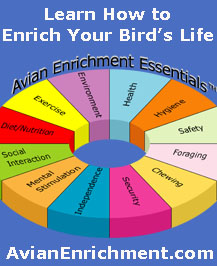Lovebirds
|
Lovebirds are one of the smaller species of parrots, and are known to be very intelligent, affectionate and social. The name 'lovebird' is perfect for these parrots because of their devotion to their mates. Pairs perch closely, preening each other, for long periods of time. Lovebirds make terrific companion parrots though they aren't known to be big talkers. Lovebirds need lots of toys and cage enrichment to stay busy and to keep their beaks trimmed. Like other parrot species, lovebirds need attention and positive interaction from their owners in order to avoid undesirable behaviors like feather-picking and biting. There are nine different species of lovebirds, and of those, three are commonly kept as companion pets. They include the Peach-Faced Lovebird, the Fischer's Lovebird, and the Masked Lovebird. In the wild, lovebirds' bodies are mostly green, with different colors on their chests, necks and heads. They have sharp beaks, stocky little bodies, and short, blunt tails. Lovebirds are five to six-and-a-half inches in length and weigh approximately one-and-a-half to two ounces. Many hybrid lovebirds have been domestically bred, and so many different color combinations of these birds exist in captivity. |
|
|
|
|
|
In the wild, lovebirds live in small flocks, with up to twenty members. However, lovebirds may form larger flocks with hundreds of birds if there is a good food or water source available. These little parrots make complicated nests in tree cavities and normally lay anywhere from four to six eggs in their clutches. Lovebirds have a varied menu to choose from in the wild. They mostly eat seeds, including grasses, sunflower seeds, millet and maize, as well as fruit and berries, flowers, and some crops grown by farmers. There are still hundreds of thousands of lovebirds in their natural habitat in Africa and Madagascar. But, like most parrot species, lovebirds are still captured and sold for pets, and therefore are considered to be threatened.
|
Listen to Lovebirds in the wild: Agapornis roseicollis © 2015 Cornell University Watch Fischer's Lovebirds searching for a nest hollow and mating: View a video of Abyssinian Lovebirds preening each other:
Source: The Internet Bird Collection |
|
|
|
||||||||||||||||||||||||||||||||||||||
|
To see more pictures and obtain information about individual cockatoo species click on the links below:
|
(source: bird-stamps.org)
|
Related Articles
 African Parrots
African Parrots







































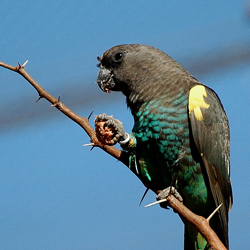



























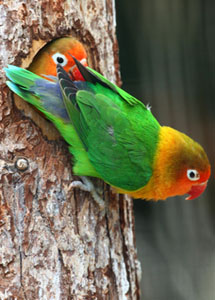
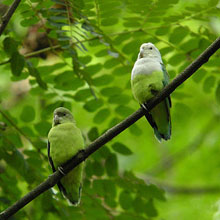
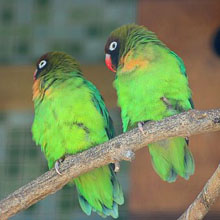

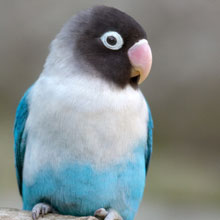
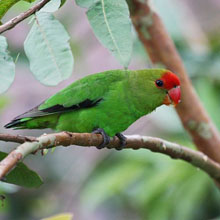
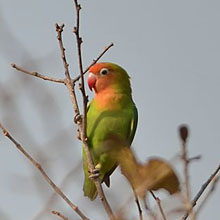


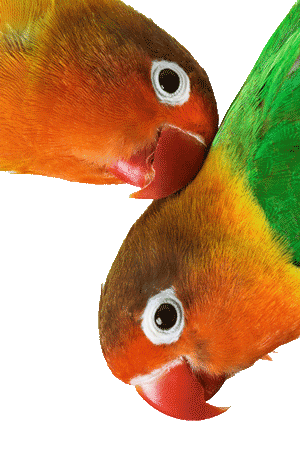

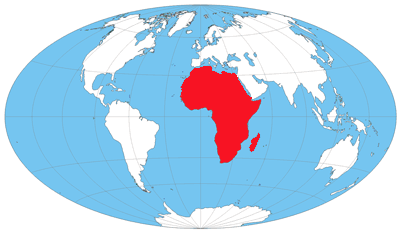 Eight of the nine species of lovebirds are native to the continent of Africa. The Grey-headed Lovebird (Madagascar Lovebird) is found on the island of Madagascar, off of the southeast coast of Africa. Lovebirds can be found in many countries, including Ethiopia, Kenya, Tanzania , South Africa, and Angola, and some species have been introduced into other African countries. The
Eight of the nine species of lovebirds are native to the continent of Africa. The Grey-headed Lovebird (Madagascar Lovebird) is found on the island of Madagascar, off of the southeast coast of Africa. Lovebirds can be found in many countries, including Ethiopia, Kenya, Tanzania , South Africa, and Angola, and some species have been introduced into other African countries. The 




